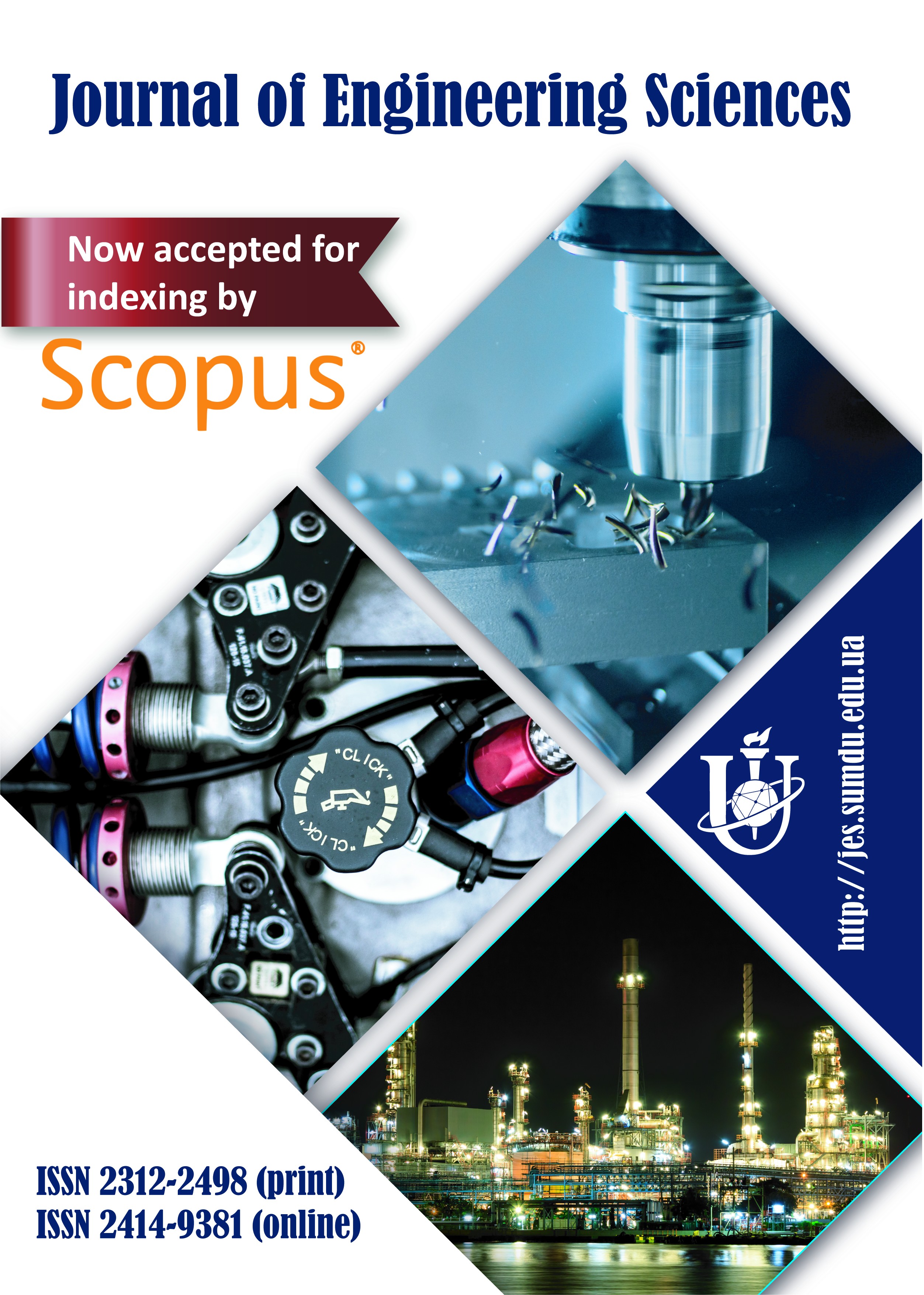Application of Reinforcing Thermocycling Treatment for Materials of Stamps Hot Deformation
Author(s): Berladir K.1*, Hovorun T.1, Bondarenko M.1, Shvetsov D.1, Vorobiov S.2
Affiliation(s):
1 Sumy State University, 2 Rymskogo-Korsakova St., 40007 Sumy, Ukraine;
2 Institute of Physics, P. J. Safarik University in Kosice, 2 Srobárova St., 041 54, Kosice, Slovakia
*Corresponding Author’s Address: [email protected]
Issue: Volume 6; Issue 2 (2019)
Dates:
Paper received: July 26, 2019
The final version of the paper received: December 6, 2019
Paper accepted online: December 11, 2019
Citation:
Berladir K., Hovorun T., Bondarenko M., Shvetsov D., Vorobiov S. (2019). Application of Reinforcing Thermocycling Treatment for Materials of Stamps Hot Deformation. Journal of Engineering Sciences, Vol. 6(2), pp. C6-C10, doi: 10.21272/jes.2019.6(2).c2
DOI: 10.21272/jes.2019.6(2).c2
Research Area: MANUFACTURING ENGINEERING: Materials Science
Abstract. The paper is devoted to the search for technological methods of increasing the resistance of the stamp tool for hot deformation. New non-standard combinations of cyclization schemes and parameters of thermocycling processing within the regime were developed. This is allowed the creation of managed structural states in the metal due to the grinding of grain, the creation of high density of defects, and the acceleration of diffusion processes to effectively manage the structure, increase the mechanical, operational properties and prevent the destruction of the working surfaces of the tool. New modes of thermocycling treatment, which have a positive effect on the mechanical characteristics of HNM5 steel, have been developed and tested. The conducted heat treatment in experimental modes, consisting of thermocycling treatment as a preliminary, quenching and tempering as the final, allows obtaining a more homogeneous structure with the preservation of fine grain and a given hardness. The grain size of the steel HNM5 structure after the use of thermocycling treatment decreases from 5–6 to 7–8 points, and after the final heat treatment – to 9–10 points.
Keywords: stamp of hot deformation, thermocycling treatment, strength, relative narrowing, thermal resistance.
References:
- Buchynskyy, M. Ya., Horyk, O. V., Chernyavskyy, A. M., Yakhin, S. V. (2017). Fundamentals of Machine Designing. Kharkiv, NTMT Publishing House [in Ukrainian].
- Berladir, K. V., Dunaeva, M. N. (2012). Heat treatment of the stamp hot deformation. The 6th Scientific and Practical University Conference of LSNC. Sumy, Sumy State University, pp. 81−82.
- Fedyukin, V. K., Smagorinskiy, M. Ye. (1989). Thermocycling Processing of Metals and Machine Parts. Engineering, Saint Petersburg [in Russian].
- Ivashenko, V. Yu., Cheylyah, A. P. (2011). The use of thermocycling for treatment of stamps. Bulletin of the Priazovsk State Technical University. Series “Technical Sciences”, Vol. 22, pp. 108–112 [in Russian].
- Guryev, A. M., Voloshin, L. G., et al. (1997). The method for thermocycling processing of tool steels. Patent, Russia, No. 2078440, MPK S21D1/78, Bulletin No. 16 [in Russian].
- Ivashenko, V. Yu., Cheylyah, A. P. (2009). On increasing the resistance of stamps for hot deformation. Construction, Materials, Engineering: A Collection of Scientific Papers, Vol. 48(1), pp. 114–118 [in Russian].
- Guryev, A. M., Voroshnin, L. G., Kharayev, Yu. P., et al. (2005). Thermocycling and chemical-thermocycling strengthening of steels. Polzunovsky Bulletin, Vol. 2(2), pp. 36–43 [in Russian].
- Pchelintsev, V. O., Hovorun, T. P., Rab, V. M., Berladir, K. V. (2012). Thermocycling treatment of shaft of 40Cr steel centrifugal pump of the NKV type. Bulletin of Sumy State University. Series “Technical Sciences Series”, Vol. 4, pp. 123–132 [in Ukrainian].
- Guryeva, O. A., Zemlyakov, S. A., Guryev, A. M. (2005). Optimization of thermocycling processing of tool steel. Bulletin AltSTU, Vol. 3-4, pp. 167–173 [in Russian].







